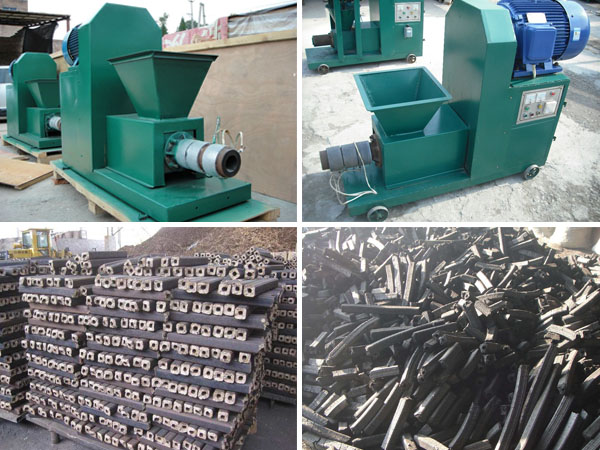What are the industrial applications of charcoal?
Charcoal produced by
briquette machine is a kind of renewable fuel. Its calorific value is higher than the similar material. It has has the features of smoke-free, tasteless, non-toxic and clean. Thus, it can be widely used in heating, barbecue, etc. In industry, it can also be used to replace coal or heavy oil combustion, boiler steam and used as chemical raw materials for advanced of treatment activated charcoal in carbon disulfide plant, mosquito - repellent incense factory, explosive factory, copper processing plant, foundry, etc.

Application of charcoal in industry:
1. Smelting of high quality nonferrous metals, cast iron and carburizing agent.
2. Mechanical parts, improving the hardness of steel and the abrasion resistance of parts.
3. Making potassium nitrate and sulphur into powder.
4. Chemical, pharmaceutical, environmental protection and so on. As a purification of chemical products, purifying water and harmful substances in air, making a mask, etc.
5. The charcoal made by corn straw and straw stalk can be used for pollution control, which can greatly reduce the cost.
What are the characteristics of briquette machine production?
1. No adhesive or harmful chemical substance is added. The equipment has reasonable design, reliable quality, simple structure, convenient operation and small size that it uses less land, labor and energy.
2. The design of automatic control of electric heating equipment, and the humidity of materials is 8-12% to ensure the stability of the material and improve the working efficiency.
3. Applicable to all raw materials, energy consumption is low.
4. The structure of the forming cylinder has been improved, which reduces the friction between the machine and raw materials. High temperature carbonizing equipment can be used to turn the
straw briquettes into smoke-free, tasteless, non-toxic charcoal with professional technical support and no risk.
